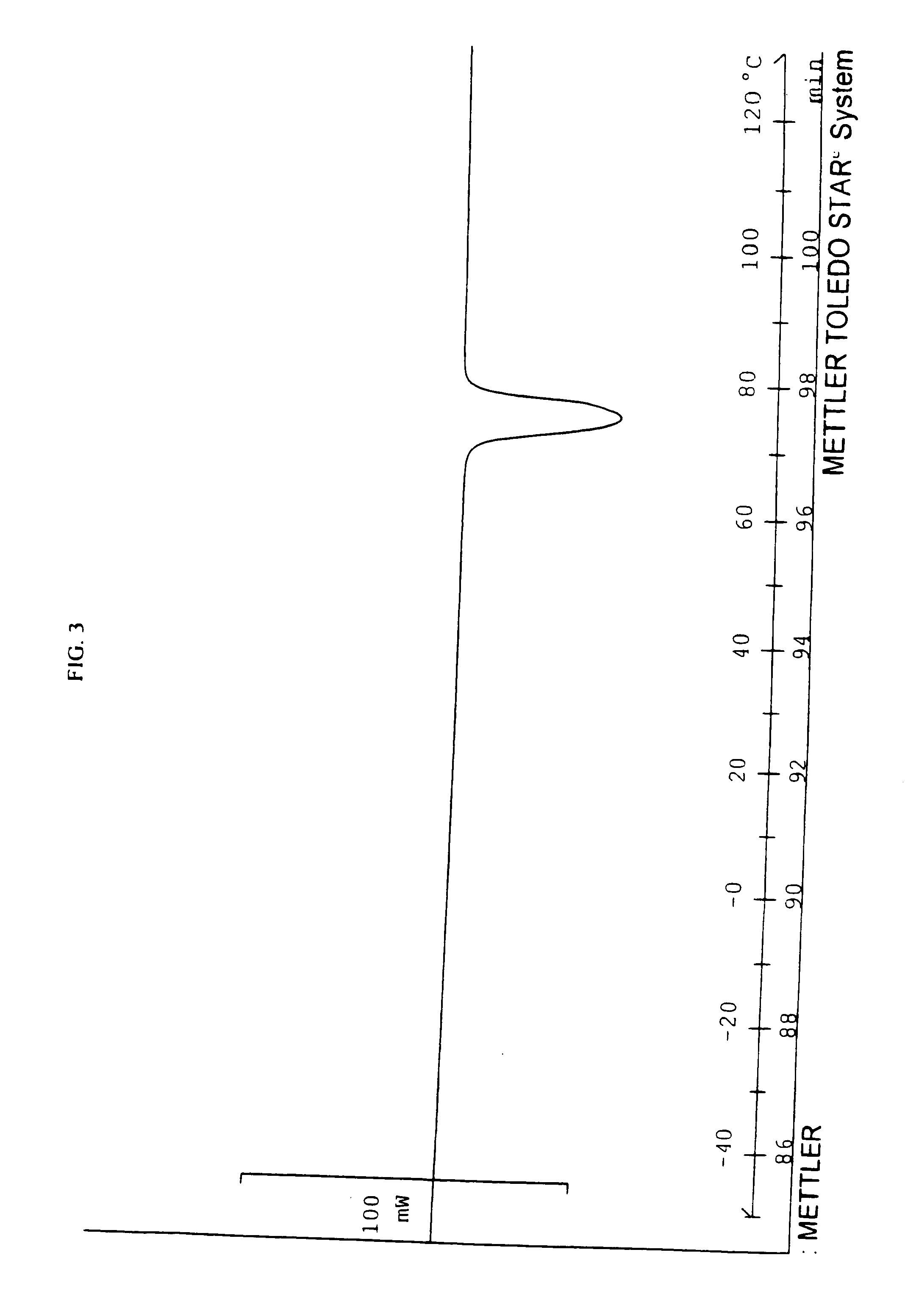Phase change solvents for thermoplastic polymers
a phase change solvent and thermoplastic polymer technology, applied in the direction of plastic/resin/waxes insulators, chemistry apparatus and processes, layered products, etc., can solve the problems of inability to reheat and mold thermoset products, inability to employ thermoset polymers regardless of mechanical properties, and inability to meet the requirements of mechanical properties, etc., to achieve low processing temperature, low shear viscosity, and suitable shear viscosity
- Summary
- Abstract
- Description
- Claims
- Application Information
AI Technical Summary
Benefits of technology
Problems solved by technology
Method used
Image
Examples
example 1
A phase change solvent having the general formula (I) is prepared by combining 260 grams (2 moles) of octanol with 404 grams (2 moles) of terephthaloyl chloride and 202 grams (1 mole) of 1,12-dodecanediol in 1500 ml of chloroform in a reaction flask. The mixture is allowed to react at 55° C. for 20 hours with constant stirring and under a vacuum, which removes HCl generated by the reaction. The reaction is terminated by cooling the mixture to room temperature. The resulting reaction mixture is poured into a large quantity of methanol to precipitate the product. The precipitant is collected over a filter, washed with 500 ml of methanol 3 times and dried at 45° C. in an vacuum oven for 20 hours. The resulting product has a number-average molecular weight of about 720 and an AA ratio of 2.3. FIG. 1 a DSC thermogram illustrating the phase changes of the phase change solvent of Example 1. As shown in FIG. 1, the phase change solvent exhibits multiple first order transitions (shown here ...
example 2
A phase change solvent having the general formula (I) is prepared by combining 260 grams (2 moles) of octanol with 502 grams (2 moles) of naphthalene-dicarboxylic acid chloride and 146 grams (1 mole) of 1,8-octanediol in 1500 ml of chloroform in a reaction flask. The reaction conditions and the product collection steps are the same as in Example 1. The resulting product has a number-average molecular weight of about 770 and an AA ratio of 1.2.
example 3
A phase change solvent having the general formula (II) is prepared by combining 130 grams (1 moles) of octanol with 404 grams (2 moles) of terephthaloyl chloride and 404 grams (2 mole) of 1,12-dodecanediol in 1200 ml of chloroform in a reaction flask. The reaction conditions and the product collection steps are the same as in Example 1. The resulting product has, a number average molecular weight of about 790 and an AA ratio of 2.7. FIG. 2 is a DSC thermogram showing the phase change properties of the solvent of this example.
PUM
| Property | Measurement | Unit |
|---|---|---|
| wt % | aaaaa | aaaaa |
| temperature | aaaaa | aaaaa |
| temperature | aaaaa | aaaaa |
Abstract
Description
Claims
Application Information
 Login to View More
Login to View More - R&D
- Intellectual Property
- Life Sciences
- Materials
- Tech Scout
- Unparalleled Data Quality
- Higher Quality Content
- 60% Fewer Hallucinations
Browse by: Latest US Patents, China's latest patents, Technical Efficacy Thesaurus, Application Domain, Technology Topic, Popular Technical Reports.
© 2025 PatSnap. All rights reserved.Legal|Privacy policy|Modern Slavery Act Transparency Statement|Sitemap|About US| Contact US: help@patsnap.com



